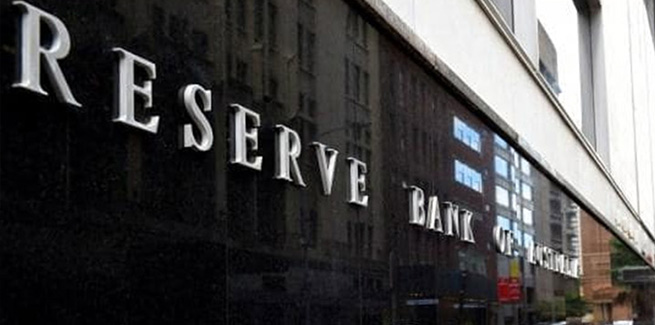In its quarterly statement on monetary policy released on Friday (4 February), the Reserve Bank of Australia (RBA) pointed to heightened demand for loans, backed by strong construction activity and demand for housing.
“Growth in housing credit moved higher over recent months and new financing commitments rebounded from the effects of lockdowns in some states,” the statement said.
“Business credit growth has increased noticeably, driven by lending to large firms. With interest rates at historically low levels, it is important that lending standards are maintained and that borrowers have adequate buffers.”
The RBA has watched the property and home loan markets alongside APRA for some time, warning that it was imperative to maintain lenders’ standards in the interest of financial stability.
In October, APRA raised the minimum interest rate buffer that banks need to use to assess serviceability of home loans.
But the regulator has tipped that it may roll out further lending controls, after it outlined potential tools such as debt-to-income lending portfolio limits.
In the new statement, the RBA stated it expects dwelling investment to remain at a high level, pointing to shifting preferences for more space in homes as a result of the pandemic.
As detailed in the report, overall housing credit growth has picked up to around 8 per cent on a six-month annualised basis – compared to the previous six months to June, which recorded a growth rate of 6.8 per cent.
Investor credit growth has continued to grow since the middle of 2021, while owner-occupier credit slipped, then began to increase in more recent months.
Owner-occupier lending growth was recorded at 10.1 per cent on a six-month annualised basis – compared to the previous six months’ 9 per cent.
However, for the three months to December, owner-occupier credit growth was recorded at 9.8 per cent, below the September quarter’s rate of 10.4 per cent.
For investors the annualised growth rate for the six months to December was 4.2 per cent, compared to the 2.6 per cent in the six months prior.
Credit growth had continued to keep escalating for investors from the September quarter’s rate of 3.4 per cent, to the three months to December’s level of 4.9 per cent.
Similarly, recent ABS data showed the total value for new housing loan commitments in December rose by 4.4 per cent, to a record high of $32.8 billion for the month. There had also been a rise in lending commitments in November, following declines in August through to October.
Owner-occupier loans had led the December climb, with a 5.3 per cent rise in the segment, to a total value of $22.4 billion. It was the second consecutive monthly incline in owner-occupier lending, following the falls seen from June 2021 through to October 2021.
“Commitments for new housing loans are at high levels,” the RBA stated.
“Owner-occupier commitments rebounded in New South Wales and Victoria in recent months, which may partly reflect the effect of the end of lockdowns on housing turnover. Investor commitments continued to rise throughout the second half of 2021 to a historically high level.”
House prices rose by 22 per cent over 2021, but the Reserve Bank noted that in recent months, the pace of price growth has eased across Sydney, Melbourne and Perth.
Supply and labour shortages in the construction sector could also slow dwelling investment, the statement warned.
“There is a large pipeline of residential construction work to be completed, with more than 120,000 new dwellings commenced across the June and September quarters,” the RBA statement said.
“Building approvals have eased from the very high levels of early 2021 as the Australian Government’s HomeBuilder scheme has now concluded; however, they remain above prepandemic levels.
“Information from the Bank’s business liaison program suggests that detached housing projects are taking longer to complete than normal due to shortages of both workers and building materials.”
Stronger housing and construction prices have helped drive up inflation, which has accelerated faster than expected.
The monetary policy statement noted stiff price competition among lenders, for fixed-rate loans, resulting from the current record-low cash rate of 0.1 per cent. But, interest rates on fixed-rate loans have drifted upwards in recent months.
Notably, net payments into offset and redraw accounts had declined in the December quarter, after increasing to a high level in the September quarter.
“The decline in December quarter payments reflected the end of lockdowns and the associated increase in consumption opportunities,” the RBA’s statement said.
“Since the onset of the pandemic in early 2020, mortgage borrowers’ payments into offset and redraw accounts have been substantial, totalling about 3.75 per cent of disposable income (around $98 billion).”
The RBA decided to maintain the cash rate at its current level of 0.1 per cent and to end its bond-buying program at its first monetary policy meeting for the year last week.
Governor Philip Lowe has insisted that the bank will not increase the cash rate until inflation is “sustainably within the 2 to 3 per cent range”.
The central bank has updated its underlying inflation forecasts, projecting that it will reach 3.25 per cent by mid-2022, before moderating to 2.75 per cent in 2023 as supply pressures ease.
It has also stated that in order for inflation to be sustainably within its target range, it would need annual wages growth to rise to at least 3 per cent.
Its central forecast now is that the wage price index will rise by 2.75 per cent over 2022, before it rises by 3 per cent in 2023.
 ;
;
